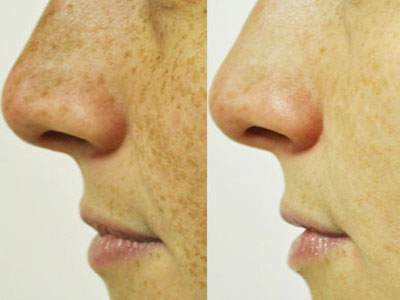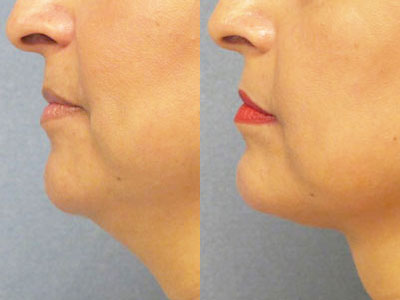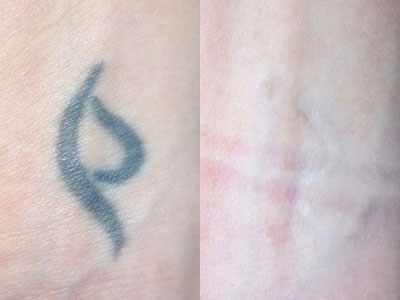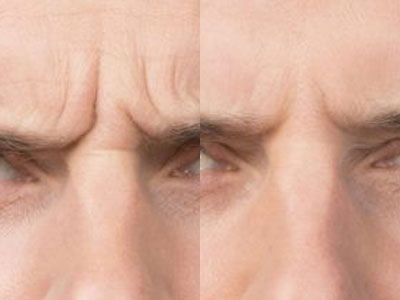Are you one of those people who is constantly making funny faces in the mirror to see just where those lines have started to deepen?
Or maybe you suffer from chronic migraines and you heard about a friend of a friend who treats migraines with Botox.
If so, you have probably started to wonder if Botox could be for you.
But what’s involved, and how long will you be down and out after your injections?
Not very long at all.
In fact, Botox recovery is typically quick and relatively free of side effects.
Let’s take a closer look at what you can expect after your procedure, proper Botox aftercare, and how you can best take care of yourself to get the most out of the procedure.
Botox Explained
So what exactly is Botox used for anyway?
Simply put, Botox in small doses will weaken or paralyze muscles to help reduce skin wrinkles or treat certain muscle conditions.
You’ve probably heard that Botox is a toxin.
This is true.
However, when used properly Botox can not only be used for cosmetic purposes but also to treat a number of medical conditions.
What Can Botox Be Used For?
Botox has long been associated with cosmetic enhancement, but did you know it can be used therapeutically as well?
Here are a few conditions that Botox can treat:
- Eyelid spasms
- Crossed eyes
- Migraines
- Drooling
- Spasmodic dysphonia
- Excessive sweating
- Thyroid eye disease
- Bell’s palsy
Cosmetically, Botox is most commonly used to:
- Smooth wrinkles in the forehead
- Eliminate crow’s feet
- Reduce the appearance of frown lines
Botox Safety
Botox is considered safe and is used globally for both cosmetic and therapeutic reasons.
If you’re considering Botox and are wondering just what to expect, you can rest assured that the side effects are typically minimal.
Here are some of the most common side effects:
- Swelling, bruising and mild pain
- A headache
- Numbness
- An upset stomach
By following the Botox aftercare instructions given to you by your doctor, you may be able to alleviate some of these symptoms.
Botox aftercare is an essential part of your recovery.
What to Do After Botox
It’s important to follow the Botox aftercare instructions provided by your doctor after your procedure.
A few simple steps you can take to ensure a smooth recovery include:
- Washing your face using a gentle cleanser and pat dry with a clean towel
- Avoiding makeup and unclean makeup brushes for at least 24 hours
- Hydrating your skin with a good Hyaluronic Acid based serum or moisturizer
- Using serum antioxidants after treatment to help heal the skin and lessen irritation
It’s also advisable to quit smoking and to reduce alcohol intake as an ongoing measure to prevent skin dehydration and wrinkles.
Botox Aftercare: Be Patient
While Botox only takes a few minutes to inject, it can take between three to seven days to notice the effects of the injections.
After Botox, aftercare instructions will be provided to you by your doctor.
Following the recommendations provided will help speed the healing process.
Botox Aftercare: Sleeping
When considering Botox aftercare, lying down may come to mind as the perfect way to unwind after your injections.
Don’t do this.
Staying upright for four to six hours will greatly reduce the risk of the Botox migrating to other areas.
The Science Behind This
Lying down too soon after Botox can put pressure on the targeted muscles and cause the injections to move to other areas.
If you have injections to your face and normally sleep on your stomach, you should sleep on your back for the first night following your procedure.
Botox Aftercare: Facial Expressions
Doing facial exercises immediately following Botox injections can speed up the healing process by about a day.
Making raised motions of the forehead and scowls in sets of 40 repetitions every 10 minutes is recommended.
The Science Behind This
In a recent study conducted at Northwestern University Feinberg School of Medicine 22, adult women were treated with Botox.
Half were then asked to do facial exercises following treatment.
For this group, both the patients and the dermatologists reported the healing process took two to three days.
The group that did not do the exercises reported that healing took about three to four days.
What Not to Do After Botox: Top 4 Things to Avoid After a Botox Treatment
So what should you NOT do after Botox injections?
In this section, we cover the top four “don’ts” of Botox aftercare.
Always follow the recommendations of your doctor, as individual circumstances may vary.
Botox Aftercare: Alcohol
You’ve just had your Botox injections and may be thinking this is the perfect time to show off your improved look over a few cocktails with friends.
Don’t do this.
Avoiding alcohol in the days leading into and immediately after your injections will reduce the risk of bruising.
The Science Behind This
Alcohol is a blood thinner that can result in sudden bruising.
While the pinprick of a Botox injection is a mild trauma, having your blood thinned out by alcohol can increase the risk and spread of bruising.
Botox Aftercare: Heat
For the first 24 hours following Botox you should avoid heat from:
- Showers and baths
- Hot tubs
- Saunas
- Tanning beds
The Science Behind This
Heat dilates blood vessels and increases circulation, which could lead to the shifting of the Botox and unnatural results or an increased risk of bruising.
Botox Aftercare: Painkillers
Botox is a relatively painless procedure so most patients do not need painkillers after injections.
However, if you require pain medication for headaches or any other reason, you should avoid taking ibuprofen or aspirin following Botox.
The Science Behind This
Aspirin and Ibuprofen have blood-thinning properties.
Avoiding them will help to reduce bruising, making your results noticeable sooner.
Do not stop taking prescribed blood thinners without first speaking to your doctor.
Botox Aftercare: Face Rubbing
You may be tempted to rub or massage the area of your Botox injection, but this is not advisable.
Try to avoid any type of facial massaging for at least 24 hours following treatment.
The Science Behind This
Rubbing, massaging, or applying significant pressure to the face after Botox can cause the dosage to move to an unintended area.
FAQs: Common Botox Post-Care Questions
We’ve compiled a list of the most common questions about aftercare for Botox and given our answers below.
Keep in mind that individual circumstances vary, so following the specific Botox aftercare instructions given to you by your doctor will help to improve your personal results.
Just how long do you have to wait to
see the effects of your Botox injections?Most patients will see results within three to four days, possibly sooner if you do facial exercises immediately following your injections.
Research shows us that there are several factors that determine how quickly your results are evident, such as:
• Dosage
• Fine vs. deep lines
• Frequency of injections
Most doctors advise waiting for two weeks to see the maximum results of the procedure.
Can I Wash My Face After Botox?
Washing your face after botox is safe, but you should follow these guidelines:
• Don’t use hot water for at least 24 hours
•Don’t use abrasive cleansers
•Be gentle and apply only light pressure
How Soon Can I Have a Facial After Botox?
You should wait at least 24 hours after Botox injections before having a facial.
Most facials require pressure and massage to the face, which could be detrimental to your healing.
Can You Wear Makeup After Botox?
There is little risk of wearing makeup immediately after your Botox injections.
Consider the following recommendations to avoid any potential problems:
• Use new or clean brushes
• Lightly dab makeup on
• Avoid rubbing, massaging or pulling
Can you Have Eyebrow Waxing or Other Eyebrow Treatments After Botox?
You should wait at least 24 hours after your injections before any eyebrow waxing or other treatments. There is a risk that the swelling or trauma caused by waxing could cause the Botox to migrate to unintended areas.
Is There Anything I Can Do After a Botox Treatment to Make the Effects Last Longer?
There are a few things you can do to help prolong the effects of your Botox treatment:
• Choose the right doctor — Injections should always be administered by a board-certified doctor for best results
• Avoid the sun — Maintain your results by using a good sunscreen and avoiding peak UV times
• Get regular Botox treatments — Having treatments at regularly scheduled intervals will weaken the muscles over time, making the treatments last longer
Can You Exercise After Botox?
It’s best to wait a full 24 hours after Botox treatments to exercise.
Exercise increases blood flow which may diffuse the Botox before it has time to settle.
This can diminish the results of the injections.
Will Bending Over Affect My Botox?
While it is possible for Botox to shift to unintended areas before it has time to settle, the risk is low. In the first 24 hours after treatment, try not to bend over repeatedly, like yoga for example, and you should be fine. It’s important to remember that everyone’s individual recovery will vary.
Always follow the Botox aftercare instructions given by your doctor.





